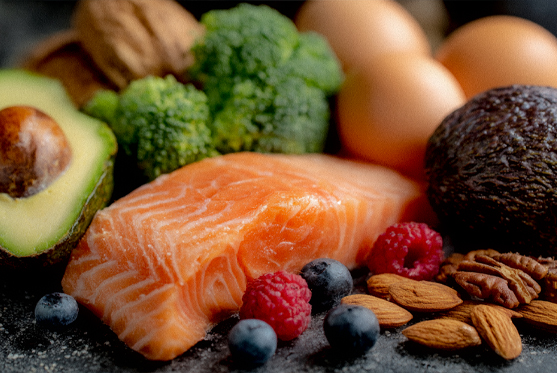



Chronic pain affects millions of Americans, interfering with daily function and diminishing quality of life. While medications and interventional treatments play important roles in pain management, one often-overlooked factor is nutrition. Emerging evidence suggests that the food we eat can directly influence pain levels by affecting inflammation, body weight, and overall health. An excellent 2024 article from the journal Nutrition Research highlights the importance of diet quality. The article noted that better diet quality had a direct (beneficial) effect on pain. Higher consumption of core foods was related to less pain in women, but not men. Interestingly, Adiposity (aka body fat) did not mediate the relationship between diet quality and pain. To translate, your body fat did not have as strong an effect on pain as diet quality.
As a pain management physician, I’ve seen firsthand how dietary changes can support a comprehensive approach to managing chronic pain.
Many chronic pain conditions—such as arthritis, fibromyalgia, and neuropathy—are rooted in inflammation. Certain foods can promote this inflammatory response, while others help reduce it. The proposed underlying mechanisms of this inflammatory response include oxidative stress, activation of the immune system, and an increase in circulating proinflammatory cytokines or inflammatory markers.
According to the World Health Organization, a diet high in omega-3 fatty acids, fruits, vegetables, and whole grains has demonstrated anti-inflammatory and lifelong health effects. On the other hand, a diet high in red meats, saturated fats, trans fats, refined starches, sugar, and salt may trigger gut dysbiosis and consequently increase intestinal permeability, resulting in an immune imbalance toward inflammation. Furthermore, antinociceptive and analgesic effects are noted with naturally occurring anti-inflammatory compounds such as flavonoids, ginger root, curcuminoids, omega-3 polyunsaturated fatty acids, and taurine.


While it was previously noted that diet quality is more important than body fat in relation to mediating pain, evidence strongly suggests that obesity (defined as abnormal or excessive fat accumulation) is common in chronic pain conditions including low back pain, headaches, osteoarthritis, fibromyalgia/chronic widespread pain, and abdominal pain. Obesity is usually defined by using weight and height to calculate “body mass index” (BMI). Normal weight status ranges from 18.5 kg/m2 to 24.9 kg/m2, and overweight status ranges from 25 kg/m2 to 29.9 kg/m2 of BMI. A BMI that is greater than 30 kg/m2 is considered to reflect obesity. The obese category is further subdivided into class I (30–34.9 kg/m2), class II (35–39.9 kg/m2), and class III (≥40 kg/m2). A BMI that is greater than 40 kg/m2 is considered as “morbid” obesity. A 2015 article examined the relationship between chronic pain and obesity. Relative to normal weight people, overweight people reported 20% greater rates of recurring pain, and the rates went up to 68% for people with class I obesity, 136% for people with class II obesity, and 254% for people with morbid obesity.
In general, people reporting widespread pain tend to have greater total fat mass and less total lean mass than those not reporting pain. Weight reduction either via surgical intervention or via behavioral intervention (ie, diet and exercise), appears to be beneficial for pain and associated quality of life. Losing even a small amount of weight—5 to 10% of your body weight, can significantly reduce inflammation and improve mobility and quality of life.
1. Start with Simple Swaps
2. Plan Balanced Meals
Aim for meals that include:
3. Stay Hydrated
Chronic dehydration can worsen joint stiffness and fatigue. Aim for at least 8 cups of water daily, and more if you're active.
4. Meal Prep for Consistency
Planning and preparing meals ahead of time can help reduce reliance on fast food or processed snacks. Try preparing:
Final Thoughts
While diet alone may not eliminate chronic pain, it can significantly reduce inflammation, improve energy levels, support weight loss, and enhance the effects of other treatments. Incorporating healthy eating into your pain management plan is a powerful step toward long-term relief and well-being.
If you’re unsure where to begin, come for a visit to discuss how to implement these changes in a practical way and get on the road to becoming healthier and pain-free.
Contact Comprehensive Pain Solutions of New Jersey To Schedule An Appointment.
(855) 830-0999
(856) 334-9602
P.O. Box 4160, Cherry Hill NJ 08034